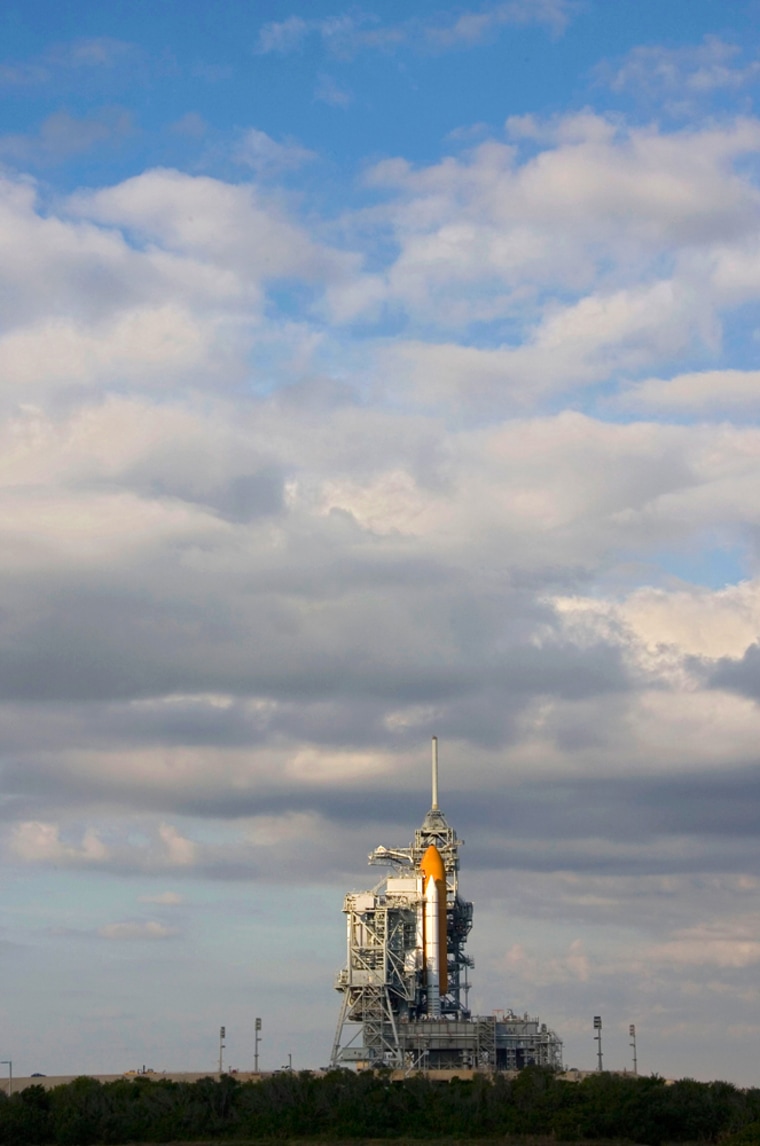Clouds of concern gathered for Thursday night’s liftoff of the space shuttle Discovery as NASA downgraded launch chances to 40 percent due to weather.
“The forecast has trended for the worse right now,” said Kathy Winters, shuttle weather officer.
An expected cloud ceiling at 3,000 feet was the biggest obstacle for getting Discovery off the ground at 9:35 p.m. ET Thursday.
NASA won’t launch with low clouds because officials want to track it visually and allow enough visibility in case the astronauts need to make a difficult emergency landing at the Kennedy Space Center’s runway.
“It’s a significant problem for us,” Winters said.
The weather wasn’t expected to be cooperating at the shuttle’s emergency landing sites in Spain and France, either.
The forecast only gets worse for the following two days. Expected crosswinds and isolated showers at Kennedy Space Center reduced the chances of launch to 30 percent on Friday and 40 percent Saturday. The weather was expected to improve at the beginning of next week.
The seven astronauts’ 12-day mission to the international space station will continue construction on the orbiting laboratory. The shuttle also will bring home one of the space station astronauts and leave behind a fresh crew member.
Technical concerns addressed
Aside from weather worries, NASA wrestled with two technical concerns before resolving them Wednesday.
The first was a split-second power surge from the launch platform to the space shuttle on Tuesday. But tests revealed no problems.
The second involved a booster-seal glue used on segments of the solid rocket boosters. A recent test by the manufacturer raised questions about the glue’s strength. After evaluating data, NASA managers concluded the adhesive was good to go.
“Everything has been found acceptable and we’re watching the weather,” said NASA spokeswoman June Malone.
NASA has four launch opportunities over five days, if need be, to start the mission.
Discovery’s seven astronauts planned to rewire the space station, deliver a 2-ton addition and replace one of the space station’s three crew members.
Nighttime launch
This is the first planned night launch in four years. NASA required daylight liftoffs for the three flights after the 2003 Columbia accident to make sure the agency could get good photos of the external fuel tank. Foam breaking off the tank at liftoff caused the damage that killed Columbia’s seven astronauts.
However, NASA is now more comfortable that the major foam problems have been addressed and that radar will help spot any debris falling.
Meanwhile, the space station’s crew awaited word Wednesday whether their visitors would be joining them soon. Mission Control told them that weather remained the only obstacle and that the technical concerns had been cleared.
“I guess no news is good news with Discovery,” said U.S. astronaut Michael Lopez-Alegria, who is spending six months living at the space lab.
